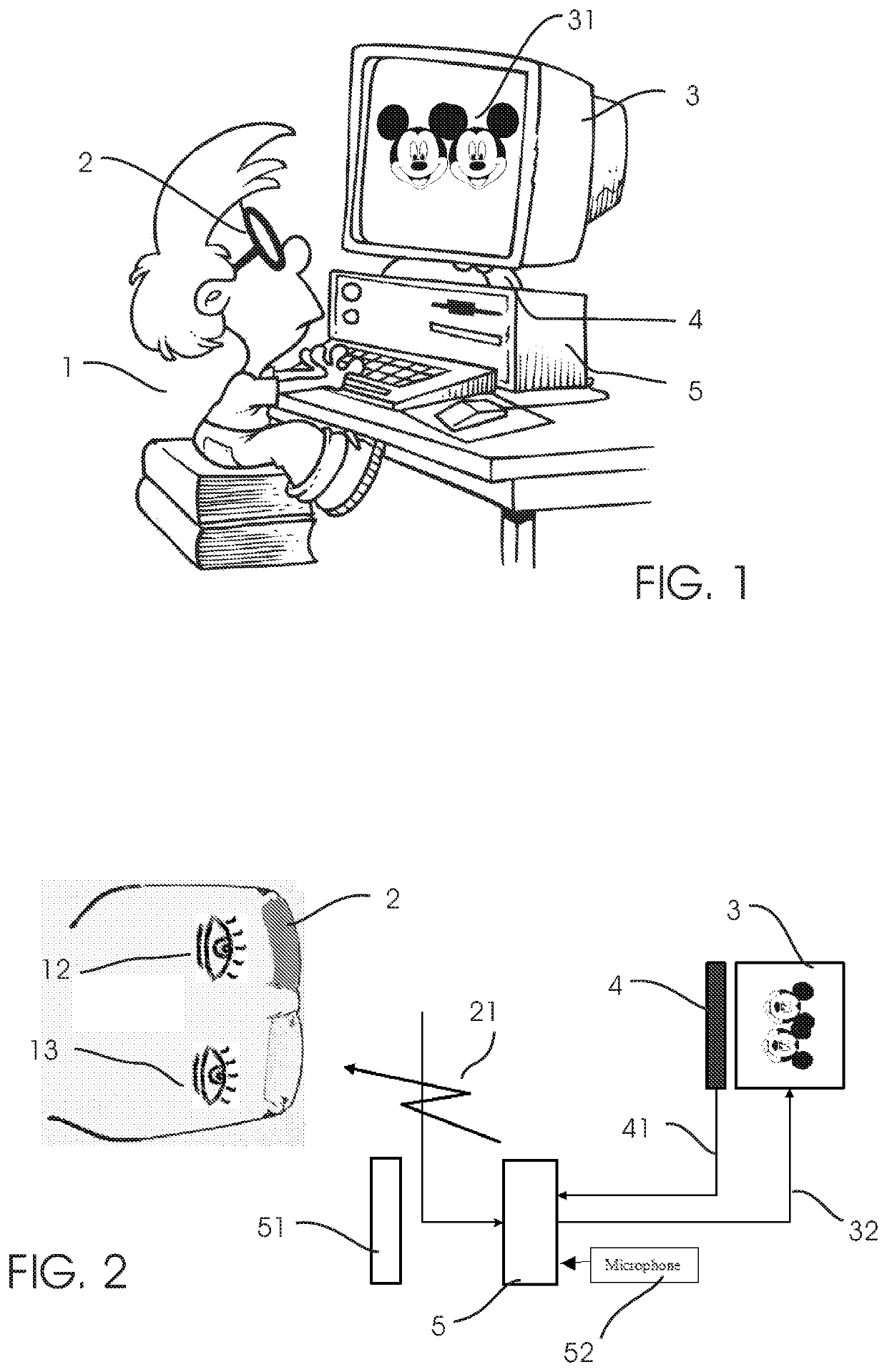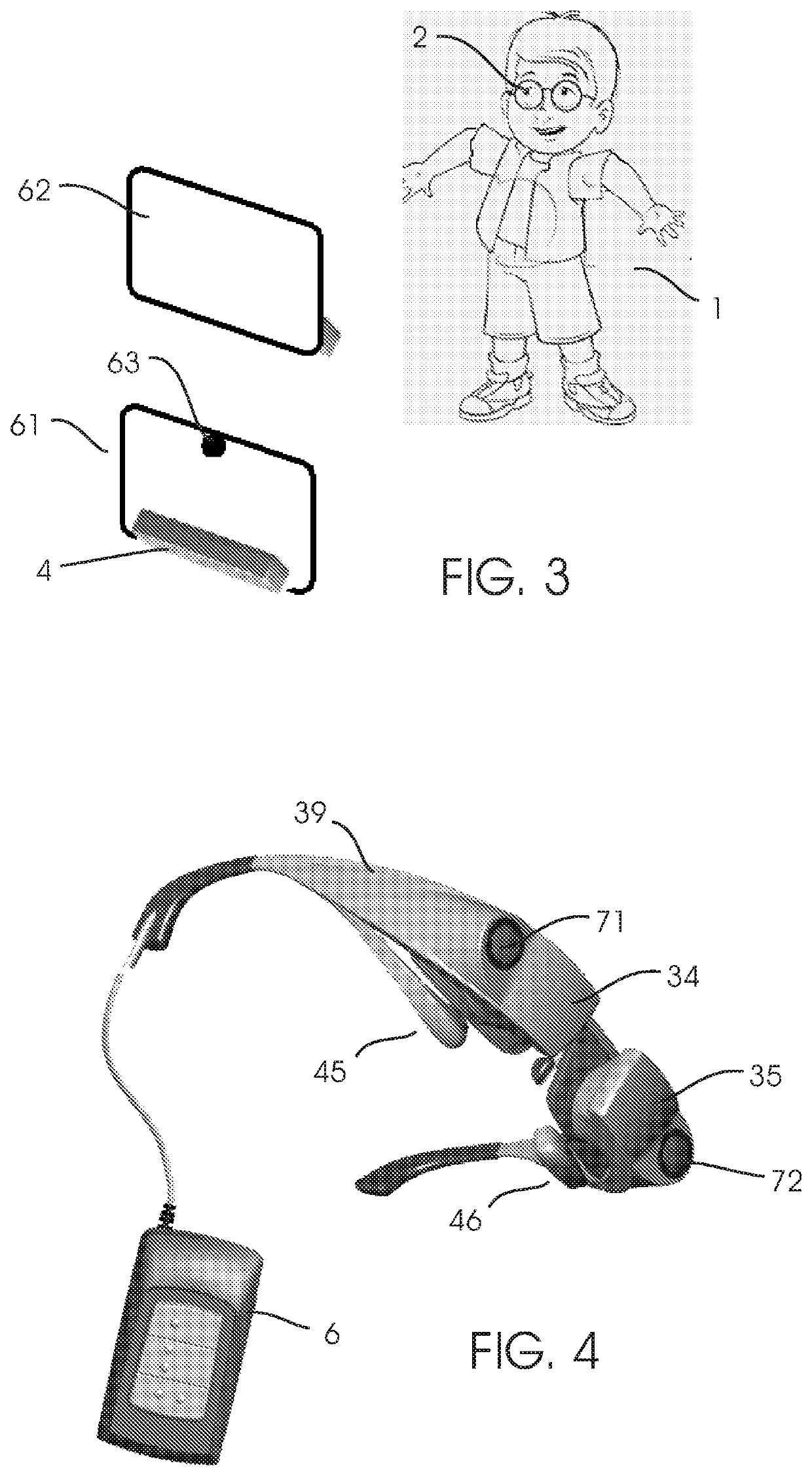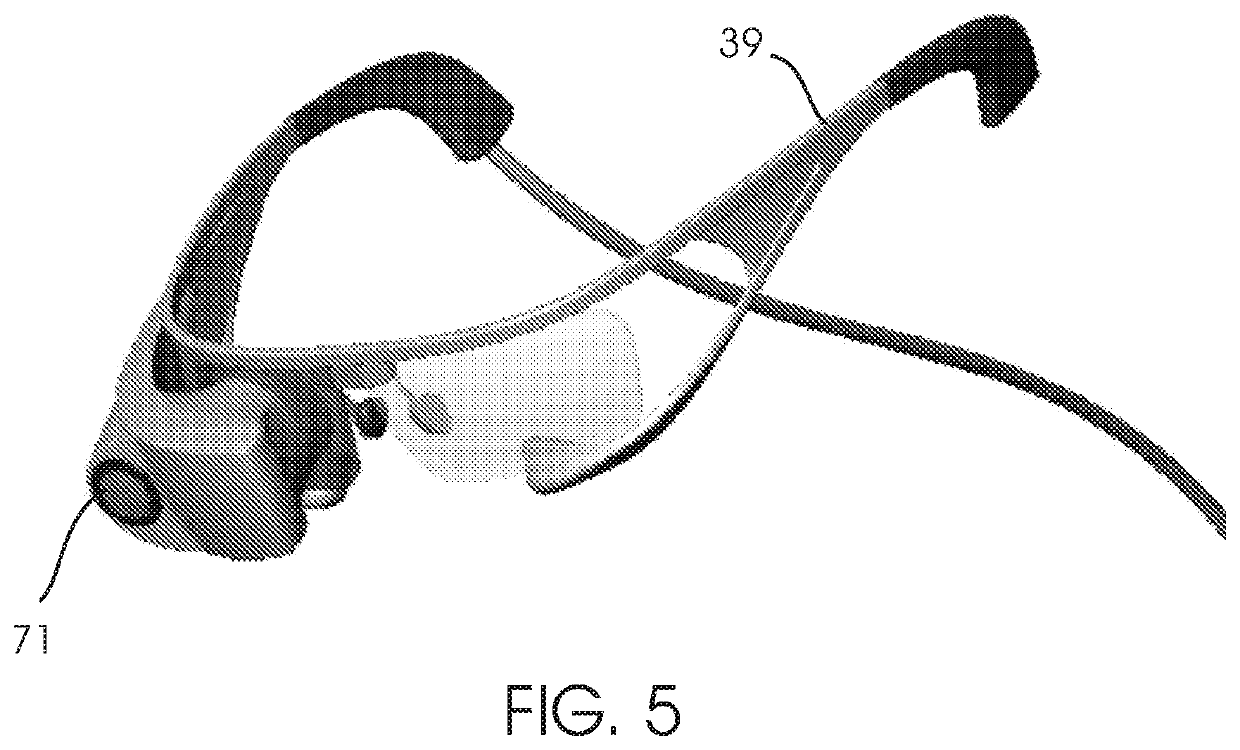Screening apparatus and method
a technology of visual impairment and apparatus, applied in the field of visual impairment, can solve the problems of permanent reduction of amblyopic eye visual capacity, double or blurry vision, and permanent amblyopic eye, and achieve the effect of reducing the existing high “false positive” rate, reducing the “false negative” rate, and facilitating the operation
- Summary
- Abstract
- Description
- Claims
- Application Information
AI Technical Summary
Benefits of technology
Problems solved by technology
Method used
Image
Examples
Embodiment Construction
[0169]The current invention will now be described by way of example and with reference to the accompanying drawings.
Remarks
[0170]a. The 3D monitor and glasses can be of any kind—e.g. passive, alternating, polarized etc.
b. Monitor=display=screen (Stationary apparatus—one 3D display; Portable apparatus—one or two micro-displays)
c. 3D=three-dimensional
d. Near eye display=micro display
e. Fellow eye=non amblyopic eye (the better, stronger eye).
A Apparatus for Simultaneously Measuring and Treating One or More Vision-Related Diseases, Using Separate Processing Methods for Each Eye
[0171]For example, the image presented to each of patient's two eyes undergoes a different processing:
[0172]a. For the non-amblyopic eye, the processing includes an area with a controlled measure of image degradation, to cause the patient to rely more on the other, weaker eye; furthermore, the location of the degraded area is moved on the screen responsive to the measured direction of the line of sight of the non-...
PUM
 Login to View More
Login to View More Abstract
Description
Claims
Application Information
 Login to View More
Login to View More - R&D
- Intellectual Property
- Life Sciences
- Materials
- Tech Scout
- Unparalleled Data Quality
- Higher Quality Content
- 60% Fewer Hallucinations
Browse by: Latest US Patents, China's latest patents, Technical Efficacy Thesaurus, Application Domain, Technology Topic, Popular Technical Reports.
© 2025 PatSnap. All rights reserved.Legal|Privacy policy|Modern Slavery Act Transparency Statement|Sitemap|About US| Contact US: help@patsnap.com



